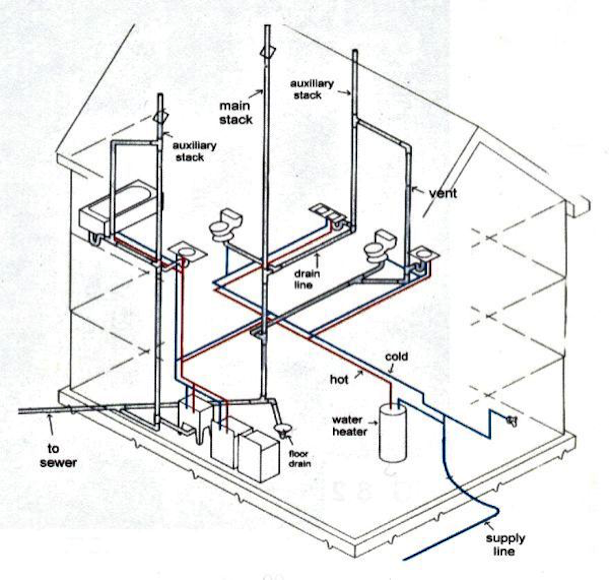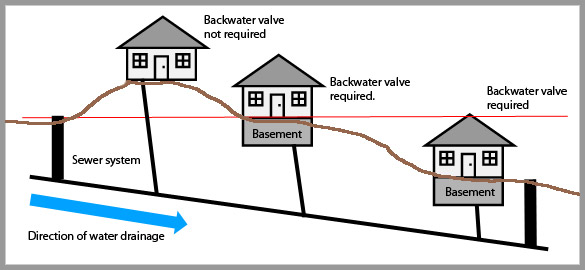Breaking Down The Anatomy of Your Home's Plumbing System
Breaking Down The Anatomy of Your Home's Plumbing System
Blog Article
Presented here on the next paragraphs you can find a bunch of professional insight regarding The Inner Workings of Your Home's Plumbing.

Understanding just how your home's plumbing system functions is necessary for every home owner. From providing clean water for alcohol consumption, cooking, and showering to safely getting rid of wastewater, a well-maintained pipes system is important for your family members's health and wellness and convenience. In this detailed overview, we'll check out the detailed network that makes up your home's pipes and offer ideas on upkeep, upgrades, and dealing with usual issues.
Intro
Your home's pipes system is more than just a network of pipelines; it's a complex system that guarantees you have access to tidy water and reliable wastewater elimination. Knowing its parts and how they collaborate can aid you avoid pricey repairs and make sure everything runs smoothly.
Fundamental Elements of a Pipes System
Pipelines and Tubing
At the heart of your plumbing system are the pipes and tubing that bring water throughout your home. These can be constructed from numerous products such as copper, PVC, or PEX, each with its advantages in terms of resilience and cost-effectiveness.
Fixtures: Sinks, Toilets, Showers, and so on.
Components like sinks, commodes, showers, and tubs are where water is utilized in your house. Understanding exactly how these components link to the pipes system aids in diagnosing issues and intending upgrades.
Shutoffs and Shut-off Points
Valves manage the circulation of water in your pipes system. Shut-off valves are essential throughout emergency situations or when you require to make repairs, enabling you to isolate parts of the system without interfering with water circulation to the whole house.
Supply Of Water System
Key Water Line
The primary water line links your home to the local water or a private well. It's where water enters your home and is distributed to various fixtures.
Water Meter and Pressure Regulatory Authority
The water meter procedures your water use, while a stress regulatory authority ensures that water flows at a safe pressure throughout your home's pipes system, stopping damages to pipelines and components.
Cold Water vs. Warm water Lines
Recognizing the difference in between cold water lines, which provide water straight from the major, and hot water lines, which bring heated water from the water heater, assists in fixing and planning for upgrades.
Drain System
Drain Pipeline and Traps
Drain pipes bring wastewater away from sinks, showers, and toilets to the sewer or septic tank. Traps prevent sewer gases from entering your home and also trap particles that can create obstructions.
Air flow Pipelines
Ventilation pipes allow air into the water drainage system, protecting against suction that can reduce drain and trigger traps to empty. Proper air flow is crucial for keeping the stability of your plumbing system.
Significance of Proper Drainage
Making certain correct drain avoids backups and water damages. Consistently cleaning up drains and maintaining catches can protect against expensive repair work and extend the life of your pipes system.
Water Furnace
Sorts Of Water Heaters
Water heaters can be tankless or typical tank-style. Tankless heating systems heat water as needed, while storage tanks store warmed water for immediate usage.
Upgrading Your Pipes System
Reasons for Updating
Upgrading to water-efficient components or replacing old pipelines can improve water high quality, reduce water expenses, and boost the value of your home.
Modern Pipes Technologies and Their Advantages
Check out modern technologies like wise leakage detectors, water-saving toilets, and energy-efficient hot water heater that can save money and lower environmental influence.
Cost Factors To Consider and ROI
Determine the upfront prices versus long-lasting savings when thinking about pipes upgrades. Numerous upgrades pay for themselves with reduced energy bills and less repair work.
Just How Water Heaters Connect to the Plumbing System
Recognizing exactly how hot water heater attach to both the cold water supply and warm water distribution lines aids in identifying issues like not enough warm water or leaks.
Upkeep Tips for Water Heaters
Regularly purging your water heater to get rid of sediment, inspecting the temperature level settings, and evaluating for leaks can prolong its life expectancy and improve power efficiency.
Usual Plumbing Concerns
Leakages and Their Reasons
Leaks can take place as a result of aging pipelines, loosened fittings, or high water stress. Addressing leaks quickly protects against water damages and mold growth.
Blockages and Obstructions
Obstructions in drains pipes and commodes are often caused by flushing non-flushable products or an accumulation of oil and hair. Making use of drainpipe displays and bearing in mind what goes down your drains pipes can protect against clogs.
Signs of Plumbing Problems to Watch For
Low water pressure, sluggish drains, foul odors, or uncommonly high water expenses are indicators of potential plumbing issues that need to be addressed promptly.
Plumbing Upkeep Tips
Normal Examinations and Checks
Set up yearly plumbing inspections to catch problems early. Try to find indicators of leakages, corrosion, or mineral buildup in faucets and showerheads.
DIY Maintenance Tasks
Basic jobs like cleansing tap aerators, checking for toilet leaks utilizing dye tablets, or shielding revealed pipelines in chilly environments can avoid major plumbing concerns.
When to Call a Specialist Plumbing Professional
Know when a pipes problem requires professional expertise. Trying intricate repair services without appropriate knowledge can lead to even more damages and higher fixing prices.
Tips for Minimizing Water Usage
Simple habits like repairing leaks promptly, taking shorter showers, and running complete lots of washing and meals can save water and reduced your utility costs.
Eco-Friendly Pipes Options
Take into consideration lasting pipes materials like bamboo for flooring, which is durable and environmentally friendly, or recycled glass for counter tops.
Emergency situation Readiness
Actions to Take During a Plumbing Emergency
Know where your shut-off shutoffs lie and exactly how to shut off the supply of water in case of a ruptured pipeline or significant leak.
Importance of Having Emergency Contacts Useful
Keep get in touch with info for regional plumbing professionals or emergency situation services conveniently available for fast reaction throughout a plumbing situation.
Environmental Impact and Preservation
Water-Saving Fixtures and Home Appliances
Installing low-flow taps, showerheads, and toilets can dramatically reduce water use without giving up performance.
DIY Emergency Situation Fixes (When Applicable).
Short-term solutions like using duct tape to spot a dripping pipeline or positioning a container under a trickling faucet can lessen damage up until a specialist plumbing technician gets here.
Final thought.
Comprehending the makeup of your home's plumbing system equips you to maintain it efficiently, conserving time and money on repair services. By adhering to regular maintenance regimens and remaining informed regarding modern-day plumbing innovations, you can guarantee your plumbing system runs effectively for several years to find.
Exploring Your Homes Plumbing Anatomy
Water Supply System
Main Water Line: This is where water enters your home from the municipal supply or a private well. Water Meter: Typically located near where the main water line enters the property, it measures the amount of water used. Shutoff Valve: It s crucial to know where this is in case of emergencies. It allows you to turn off the water supply to the entire house. Pipes and Fittings: These distribute water throughout your home. Materials can include copper, PVC, or PEX. Drain-Waste-Vent (DWV) System
Drains: Located in sinks, showers, and tubs, these carry wastewater away. Traps: U-shaped pipes under sinks that hold standing water, blocking sewer gases from entering the home. Vents: Pipes that lead from the DWV system to the outside, preventing vacuum formation and allowing gases to escape. Sewer Line: Carries all wastewater from the home to the municipal sewer system or a septic tank. Fixtures and Appliances
Sinks, Toilets, and Showers Dishwashers and Washing Machines Water Heaters Maintenance Tips
Regularly check for leaks in exposed pipes and around fixtures. Inspect the water heater annually for signs of wear. Clean drains and traps to prevent clogs and odors. Know how to shut off water to individual fixtures. When to Call a Professional
Major leaks or burst pipes Installation of new pipes or fixtures Septic tank issues Remodeling projects that involve plumbing changes Conclusion
Understanding the anatomy of your home's plumbing is key to maintaining a functional and efficient system. Regular checks and knowing when to call in the experts can save you time, money, and stress.
https://www.mavyn.com/blog/exploring-your-homes-plumbing-anatomy

Hopefully you enjoyed reading our section about Exploring Your Homes Plumbing Anatomy. Thanks a lot for taking time to read our article post. For those who appreciated our blog entry if you please be sure to pass it around. I recognize the value of your readership.
Click Here Report this page